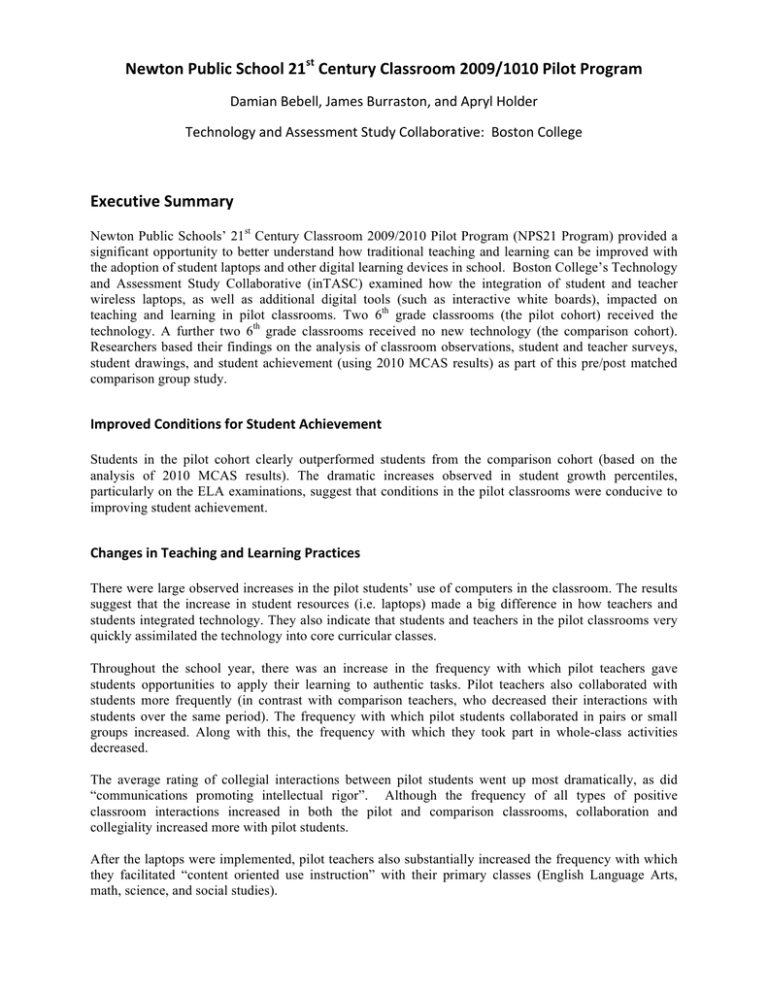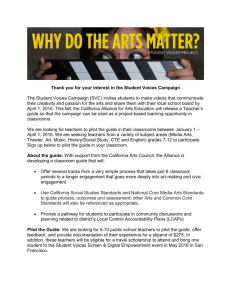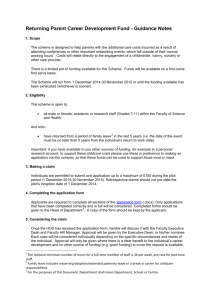Newton Public School 21 Century Classroom 2009/1010 Pilot Program
advertisement

Newton Public School 21st Century Classroom 2009/1010 Pilot Program Damian Bebell, James Burraston, and Apryl Holder Technology and Assessment Study Collaborative: Boston College Executive Summary Newton Public Schools’ 21st Century Classroom 2009/2010 Pilot Program (NPS21 Program) provided a significant opportunity to better understand how traditional teaching and learning can be improved with the adoption of student laptops and other digital learning devices in school. Boston College’s Technology and Assessment Study Collaborative (inTASC) examined how the integration of student and teacher wireless laptops, as well as additional digital tools (such as interactive white boards), impacted on teaching and learning in pilot classrooms. Two 6th grade classrooms (the pilot cohort) received the technology. A further two 6th grade classrooms received no new technology (the comparison cohort). Researchers based their findings on the analysis of classroom observations, student and teacher surveys, student drawings, and student achievement (using 2010 MCAS results) as part of this pre/post matched comparison group study. Improved Conditions for Student Achievement Students in the pilot cohort clearly outperformed students from the comparison cohort (based on the analysis of 2010 MCAS results). The dramatic increases observed in student growth percentiles, particularly on the ELA examinations, suggest that conditions in the pilot classrooms were conducive to improving student achievement. Changes in Teaching and Learning Practices There were large observed increases in the pilot students’ use of computers in the classroom. The results suggest that the increase in student resources (i.e. laptops) made a big difference in how teachers and students integrated technology. They also indicate that students and teachers in the pilot classrooms very quickly assimilated the technology into core curricular classes. Throughout the school year, there was an increase in the frequency with which pilot teachers gave students opportunities to apply their learning to authentic tasks. Pilot teachers also collaborated with students more frequently (in contrast with comparison teachers, who decreased their interactions with students over the same period). The frequency with which pilot students collaborated in pairs or small groups increased. Along with this, the frequency with which they took part in whole-class activities decreased. The average rating of collegial interactions between pilot students went up most dramatically, as did “communications promoting intellectual rigor”. Although the frequency of all types of positive classroom interactions increased in both the pilot and comparison classrooms, collaboration and collegiality increased more with pilot students. After the laptops were implemented, pilot teachers also substantially increased the frequency with which they facilitated “content oriented use instruction” with their primary classes (English Language Arts, math, science, and social studies). It is noteworthy to consider that by the end of the 2009/2010 school year, the comparison teachers reported a little more than half the percentage of students working on task as pilot teachers. Examined collectively, there is strong evidence suggesting that there were real and measurable shifts in teaching and learning practices in the pilot classrooms that were not observed in the comparison classrooms. The shifts in teaching and learning practices that were consistently observed in the pilot classrooms were associated with many of the espoused goals and student objectives of the NPS Strategic Plan. Overall, students and teachers felt overwhelmingly positive towards using technology as a serious learning tool in school in both pre and post-laptop surveys. Specifically, both pilot and comparison student cohorts were found to be quite favorable in their attitudes and beliefs towards the educational opportunities afforded through computers and digital technology. Over the course of the year, as pilot students increased their use of educational technology, their beliefs and attitudes towards ICT grew to be more positive. Additional information on the Newton Public Schools 21st Century Classroom 2009/2010 Pilot Program can be found at: www.bc.edu/nps21





